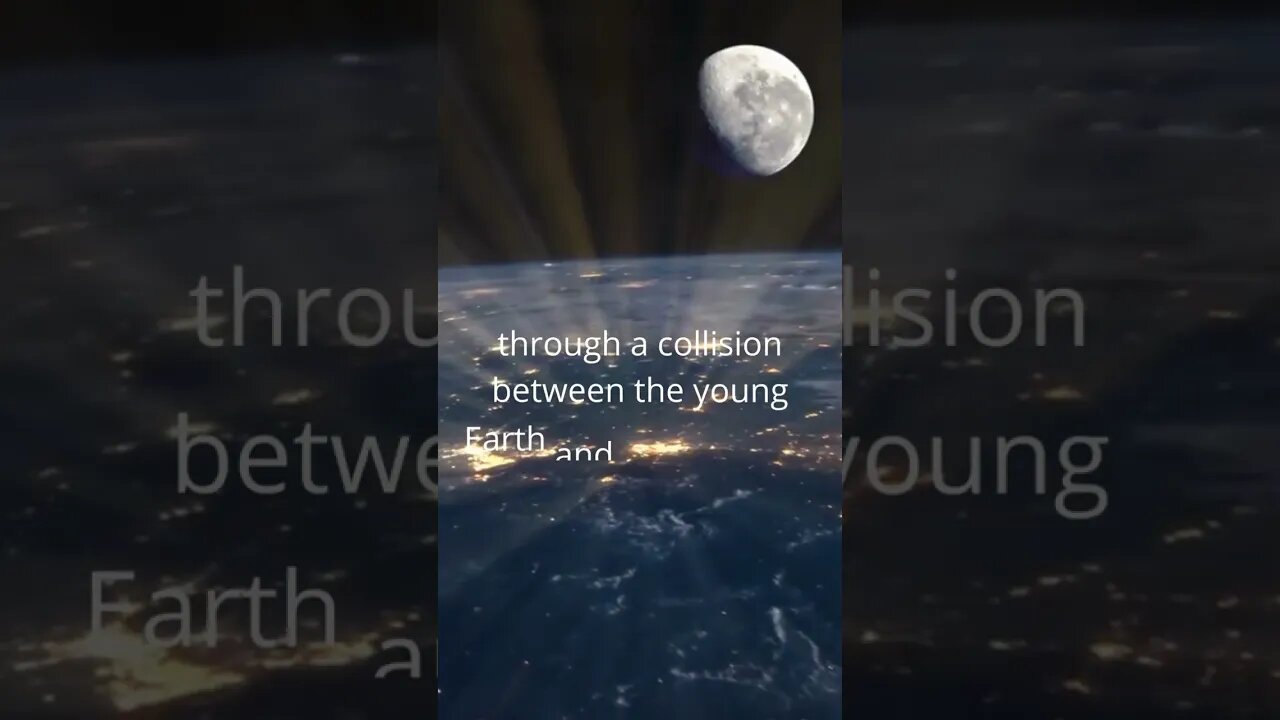Premium Only Content

How moon was created? #shorts #moon #science #answer
The moon has long been a source of fascination for humans, and its presence in the night sky has played a significant role in many cultures and societies throughout history. But how did the moon come to be? Scientists have been studying this question for centuries, and while we have a good understanding of the moon's origins, there are still some mysteries surrounding its creation.
One of the most widely accepted theories about the moon's creation is known as the giant impact hypothesis. According to this theory, the moon was formed approximately 4.5 billion years ago when a Mars-sized object collided with the young Earth. The impact was so powerful that it caused a chunk of Earth's mantle and crust to break off and eventually coalesce into the moon.
The giant impact hypothesis explains many of the moon's unique characteristics, such as its composition and its orbit around Earth. It also helps to explain why the moon is so much smaller than Earth and why it has no atmosphere. For example, the moon's composition is very similar to that of Earth's mantle, which suggests that it formed from the same material as Earth. Additionally, the moon's orbit around Earth is tilted relative to Earth's orbit around the sun, which is consistent with the idea that it was formed from a collision.
Despite the acceptance of the giant impact hypothesis, there are still some questions that remain about the moon's creation. For example, some scientists have suggested that the moon may have formed from a cloud of debris that was created by the collision between Earth and the Mars-sized object. Others have proposed that the moon may have formed from multiple smaller impacts rather than a single giant impact.
In addition to the giant impact hypothesis, there are a number of other theories about the moon's creation that have been proposed over the years. These theories include the fission hypothesis, which suggests that the moon formed from a chunk of Earth that was spun off during the formation of the solar system, and the capture hypothesis, which suggests that the moon was formed elsewhere in the solar system and was later captured by Earth's gravity.
Overall, the moon's creation is a complex and fascinating topic that continues to be studied by scientists. As we continue to learn more about the moon and its origins, we may uncover even more insights into this mysterious celestial body.
"The Fascinating Story of How the Moon Was Created"
"Exploring the Mysteries of the Moon's Origins"
"Uncovering the Truth About the Moon's Creation"
"The Giant Impact Hypothesis: How the Moon Formed"
"The Moon's Creation: A Comprehensive Guide"
"Deciphering the Story of the Moon's Formation"
"The Moon's Creation: Separating Fact from Fiction"
"Exploring the Different Theories About the Moon's Origins"
"The Moon's Creation: An Ongoing Mystery"
"The Moon's Creation: A Journey Through Time"
-
 1:25:29
1:25:29
Sarah Westall
13 hours agoX-Files True History, Project Blue Beam, Cabal Faction War w/ Former FBI Agent John DeSouza
99.8K40 -
 7:03:49
7:03:49
Dr Disrespect
21 hours ago🔴LIVE - DR DISRESPECT - NEW PC VS. DELTA FORCE - MAX SETTINGS
185K29 -
 49:04
49:04
Lights, Camera, Barstool
1 day agoIs The Monkey The Worst Movie Of The Year?? + Amazon Gets Bond
85.7K5 -
 24:19
24:19
Adam Carolla
1 day agoDiddy’s Legal Drama Escalates, Smuggler Caught Hiding WHAT? + Philly Eagles & The White House #news
173K22 -
 10:12
10:12
Mike Rowe
2 days agoClint Hill: What A Man. What A Life. | The Way I Heard It with Mike Rowe
149K18 -
 1:31:52
1:31:52
Redacted News
16 hours agoBOMBSHELL! This is war! FBI whistleblowers reveal Epstein files being destroyed? | Redacted News
215K401 -
 48:55
48:55
Candace Show Podcast
17 hours agoSTOP EVERYTHING. They FINALLY Mentioned ME In The Blake Lively Lawsuit! | Candace Ep 152
184K144 -
 1:02:51
1:02:51
In The Litter Box w/ Jewels & Catturd
1 day agoWhere are the Epstein Files? | In the Litter Box w/ Jewels & Catturd – Ep. 750 – 2/26/2025
125K91 -
 1:59:06
1:59:06
Revenge of the Cis
18 hours agoLocals Episode 198: Suits
101K16 -
 1:38:56
1:38:56
SLS - Street League Skateboarding
1 day agoTop Moments from the Second Half of the 2024 SLS Championship Tour! All The 9’s 🔥
71.2K2